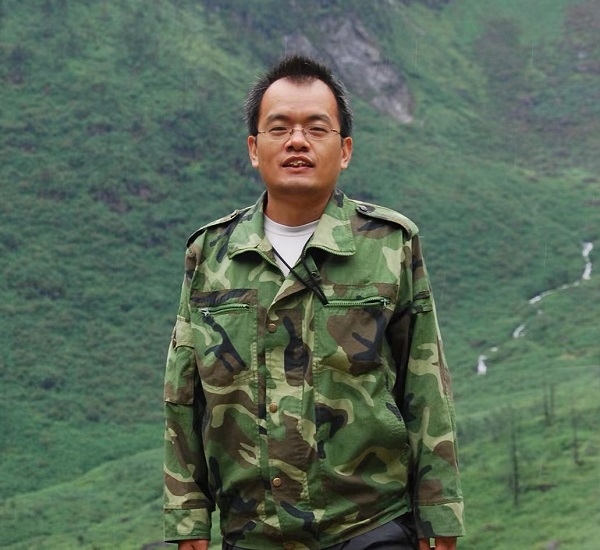|
青年创新奖名单
|
历届青年创新奖
 王伟,生于1978 年11 月。博士,中国科学院植物研究所研究员,博士生导师。2002 年在云南大学获学士学位,2007年在中国科学院植物研究所获博士学位并留所工作,历任助理研究员、副研究员、研究员。2014年入选中国科学院青年创新促进会,2022年获“中国科学院朱李月华优秀教师奖”。目前担任中国科学院大学岗位教授,Frontiers in Plant Science、《生物多样性》和《热带亚热带植物学报》等期刊编委,中国地理学会生物地理学专业委员会委员,国家自然科学基金和教育部学位中心通讯评审专家。主要通过整合系统发育、分化时间和生物地理等多种研究手段,围绕特定类群的分类、系统发育和生物地理学以及特定区域生物多样性的起源与演化进行研究。主要研究结果以第一或通讯作者发表在PNAS、Nature Communications、New Phytologist、Cladistics、Proceedings of the Royal Society B、Journal of Biogeography、Journal of Integrative Plant Biology和Molecular Phylogenetics and Evolution等刊物上。 王伟博士主要从事植物分类学、系统学和生物地理学研究,在植物分类学与系统发育,植物时空格局与区系地理、地球演变,植物多样性进化与植被形成等研究方面取得了一系列的原创性成果。 1. 植物分类学与系统发育研究 在传统分类研究的基础上,通过整合形态和系统发育历史,系统解决了毛茛目和其他相关被子植物疑难类群的分类学问题,提出了世界毛茛目、防己科新分类系统,发表了1新科、3新族、5新属和14个新组合,发现一中国新纪录属,以实际案例阐明了分类学在生物多样性保护中的重要作用,形成了“以系统发育为原则的整合分类学”的研究范式。 2. 植物时空格局与区系地理、地球演变研究 基于“物种分化-区系发生-植被演替-地球演变”相统一的研究方法,以毛茛目和其他相关植物类群为代表,全面解析了全球热带植物区系之间的散播路线和时间,阐明了中国大陆、台湾、日本植物区系之间的历史联系,揭示了台湾南部植物区系的古老性,发现菟葵属地理分布格局的形成反映了亚洲三大高原的形成过程。 3. 植物多样性进化与植被形成研究 以毛茛目及其他相关类群为指示成分,整合系统发育、分化时间、生物地理等多种研究方法,并结合气候和物种分布数据,揭示了热带雨林、荒漠植被、东亚亚热带常绿阔叶林以及北极苔原植被的形成过程,阐明了东亚亚热带喀斯特和洞穴特殊生境生物的迁入动态及其驱动因素,解析了活化石植物类群领春木科在大尺度环境变化中的进化和适应机制。 Prof. Wei Wang, Principle Investigator, PhD supervisor of the Institute of Botany, the Chinese Academy of Sciences (CAS). 2002, Prof. Wang mainly focuses on the taxonomy and evolution of Ranunculales and related taxa, and the formation processes of species diversity of a few important biomes and floras and potential driving factors. In the past few years, he has made a series of original achievements. 1. Plant taxonomy and phylogenetics Based on morphological and phylogenetic data, Prof. Wang and his group proposed new classification systems for global Ranunculales and Menispermaceae, respectively. He described one new family, three new tribes, five new genera, and 14 new combinations, and reported a newly recorded genus from 2. Spatio-temporal pattern, floristic geography and Earth evolution By investigating the spatio-temporal evolution of several Ranunculales taxa, he and his group elucidated the patterns and possible timings of exchanges of megathermal lineages among different continents. He revealed biogeographical relationships among mainland 3. Evolution of plant diversity and vegetation formation Using an integration of phylogenetic, molecular dating, biogeographic methods, he and his group revealed the diversification processes of several important taxa, and then using these taxa as the indicators, they explored the evolutionary dynamics of tropical rainforests, dryland floras, and East Asian subtropical evergreen broadleaved forests, respectively. They revealed biotic colonization dynamics of subtropical East Asian karst and cave habitats, and unraveled evolutionary history of the Arctic flora. In addition, they illustrated how living fossil plants evolve and adapt through large-scale environmental change. |
版权所有 Copyright © 2015-2019 云南吴征镒科学基金会,All Rights Reserved 【滇ICP备05000394号】
地址:中国云南省昆明市蓝黑路132号 邮政编码:650201
点击这里联系我们
